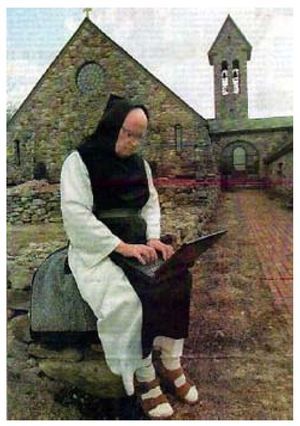The Editors' Network of the European Society of Cardiology (ESC) defined its mission in the statement published across the national cardiac journals of Europe in 2008.1 The Network is now considering ways in which their publications can have a broader influence in the field of postgraduate education.
The need for cardiologists to continue to learn throughout their professional life will remain essential. Indeed recognition for the need for postgraduate education was highlighted by Hippocrates long before it was espoused by the Medication Educationalists and Public Relations Departments. "Ars longa, vita brevis" is the Latin translation of Hippocrates' recognition that for a doctor, the need to continue learning the art of medicine, lasts for all of our professional life. In medieval times, the foundation of modern day ethical medical practice was laid within the heart of the universities; the long term future of the medical profession was founded in the concept of doctors as men, and women, of learning and knowledge, rather than the purveyors of non-scientifically based remedies.
So how does the modern day Editor of a national cardiology journal, crouched over his computer screen, relate to his medieval predecessor, the Abbot in charge of the university library selecting the books for scholarly enterprise? The most obvious difference, of course, is that the Internet provides modern day authors with easy access to the Editor and consequently the Editor is obliged to make judgements on a much larger number of manuscripts than his predecessor would have been asked to do (Figure 1). The academic effort however is potentially very valuable, allowing the Editor to accumulate a current wisdom of which writers combine both the knowledge of cardiovascular medicine, with the style with which to communicate that knowledge, in an authoritative way to doctors who wish to learn.
Figure.
What are the characteristics of doctors who wish to learn? As adults, they prefer a self-directed approach, in which they identify their own learning needs, formulate learning objectives, identify resources to achieve these objectives and evaluate their own learning.2 Medical journals provide a ready resource for meeting the aims of self-directed learning, particularly through their commentary and review articles, but the value of the resource is critically dependent on the quality of the content, which in turn depends on 3 factors:
1. Subject selection: ideally this should be curriculum-based, the core curriculum of the ESC intending to provide a framework for the continuing medical education of the general European cardiologist. Both mainstream and more peripheral subject matter are required for comprehensive educational coverage, and so there will be a need for updates, particularly in areas where new discoveries are proceeding most rapidly.
2. Author selection: Editors are in an unrivalled position to select from currently active authors, those best able to educate others based on their subspecialty expertise and writing skills. Clear presentation must be coupled with the intellectual rigor to back up assertions with evidence derived from critical appraisal of the relevant literature.
3. Presentation: this should be designed to help stimulate the reader, using highly structured content, relevant illustrations, summary box displays, and annotated references that allow the reader to refer back to source material.
Adults who wish to learn, however, require more of medical journals than high quality commentary and review articles. They also require educational feed-back provided by accrediting organisations in order to consolidate their learning and acquire the continuing medical education (CME) credits that in many countries are becoming an essential requirement for practising doctors. The European Board for Accreditation in Cardiology (EBAC), for example, requires that cardiologists earn a minimum of 250 CME credits over a period of 5 years, 125 of which must be "external CMEs" from formally planned external activities, including educational articles.3 The EBAC accreditation policy for CME articles is summarised in Table 1 and includes a requirement for "an objective evaluation instrument," recommending the use of a multiple choice questionnaire (MCQ) made available on-line. Articles of >3500 words and 6 MCQs are considered equivalent to 1 hour of educational activity and provide 1 CME credit.
Nearly all the national cardiac journals of Europe carry high quality review articles4-7 (Table 2). Heart, the UK-based international cardiac journal, has been a leader in the field of journal-based education for 10 years,8 and currently accounts for >95% of educational articles attracting CME credits on the EBAC web site. Its educational section runs semi-autonomously within the journal under the direction of a dedicated editor and a team of specialist advisors. Education in Heart is available for free access via the Heart and ESC web sites9,10 and its articles are among the most highly accessed of all the journal's papers, consistently appearing in the top ten web-downloads during 2008.11-15 High quality educational content with provision of local CME credits is also available in other national cardiac journals16-17 (Table 2) and the Editors' Network now provides a real opportunity to extend these educational initiatives throughout the national cardiology journals of Europe.10
*See Appendix for complete affiliations.
This manuscript will be simultaneously published in all ESC National Societies and ESC Affiliated Societies' cardiovascular journals that consented to publication.
Correspondence: A. Timmis MD,
Dept of Cardiology, London Chest Hospital, Bonner Road, London E2 9JX, United Kingdom
E-mail: adamtimmis@mac.com





